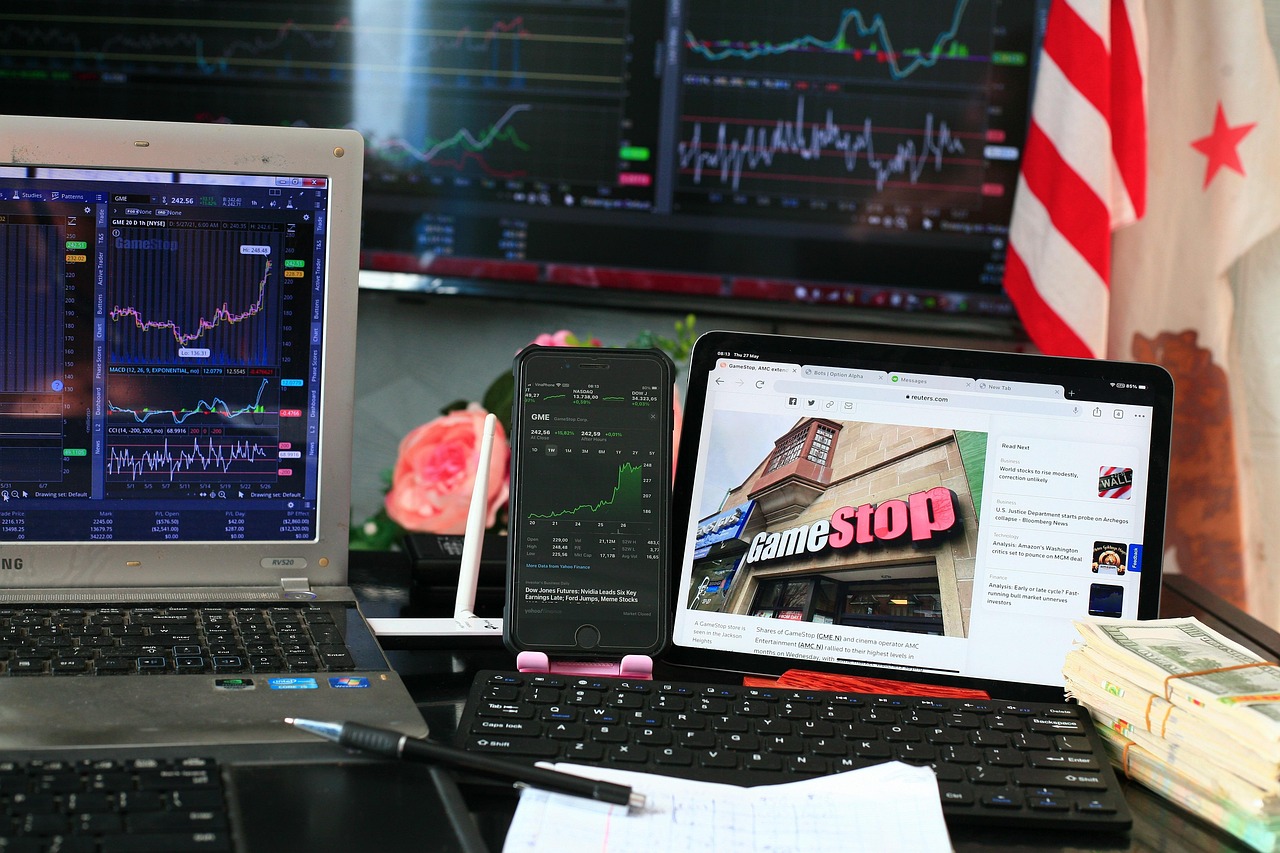How to Build a Consistent Trading Routine That Works
Learn how to design a trading routine that builds consistency, discipline, and real results — step by step.

Consistency is the holy grail of trading.
Every trader talks about it. Few actually master it.
One week, you’re up before the bell, scanning setups, disciplined and ready. The next week, you’re chasing alerts, skipping journaling, and convincing yourself you’ll “get back on track tomorrow.” Sound familiar?
That’s the gap — not between knowledge and results, but between intention and execution.
A profitable trading system isn’t just about strategy or indicators — it’s about rhythm. The kind of rhythm that keeps you calm when markets turn volatile, focused when emotions run high, and structured when everything feels random.
In this guide, you’ll learn how to design a trading routine that actually works — one that fits your schedule, protects your mindset, and creates consistent performance week after week.
By the end, you’ll have a repeatable framework to:
- Plan your trades like a pro.
- Build a daily flow that reinforces good habits.
- Measure your progress using key metrics.
- Use data (not feelings) to improve your edge.
Because consistency isn’t a trait — it’s a system. And the traders who master that system? They don’t rely on motivation — they rely on process.
Morning Prep: Set the Foundation for Consistency
Every trader wants to be consistent. But consistency doesn’t begin with your strategy — it begins with your state.
Your mind is your first market. If it’s cluttered, emotional, or rushed, your trades will mirror that chaos. A good morning routine doesn’t just organize your schedule; it regulates your nervous system and primes your focus before the charts ever load.
Why Your Morning Shapes Your P&L
The first 60 to 90 minutes of your day set the tone for everything that follows. When you wake up late, scroll through news headlines, and open your platform already feeling behind — you’ve already started reactive. You’re not trading a plan; you’re fighting for control.
Professional traders don’t let randomness dictate their day. They engineer consistency by controlling what they can — preparation, focus, and review — so they can handle what they can’t.
Think of your morning as your pre-flight checklist. You’re not trying to predict turbulence; you’re confirming that your instruments, your fuel, and your mindset are ready for the sky.
Your Core Pre-Market Framework
- Mind Before Market
- Wake up at a consistent time. Your brain loves rhythm.
- Hydrate and stretch — oxygen and movement sharpen focus.
- Eat light and avoid sugar spikes.
- Spend two minutes setting an intention like, “Today, I follow my plan, not my emotions.”
- Scan for Clarity, Not Prediction: Pre-market scanning isn’t about guessing direction — it’s about filtering distractions. Review:
- Your top 3–5 tickers that match your setups.
- News or catalysts that might influence volatility.
- Broader market trend (SPY, QQQ, major sectors).
- Key levels (support, resistance, VWAP, volume zones).
- And equally important: markets you’ll ignore today.
- A disciplined trader knows what not to trade.
- Define a Daily Focus Metric: Most traders measure success in dollars; professionals measure it in execution. Pick one focus metric per day — like:
- Monday: trade quality
- Tuesday: position sizing
- Wednesday: risk discipline
- Thursday: reward-to-risk precision
- Friday: journaling review
- Improving one behavior at a time compounds faster than trying to fix everything at once.
- Visualize Execution, Not Outcome: Close your eyes for 30 seconds and visualize executing a perfect trade — not a winning one, but one where you followed your system flawlessly. Neuroscience shows visualization activates the same motor pathways as real performance. You’re not hoping — you’re rehearsing.
Example Morning Routine (Day vs. Swing Trader)
Mindset Cue: Win the Morning, Trade the Plan
You can’t control how the market opens — but you can control how you show up.
A stable morning routine trains your nervous system for structure. When structure becomes habit, decision-making becomes smoother. You’ll start noticing patterns faster, cutting losses earlier, and holding winners longer.
Consistency is not luck; it’s repetition under discipline. If you win your morning, the rest of the session often takes care of itself.
Mid-Session Focus: Trading in Flow
Preparation builds the foundation — but execution is where most traders fall apart. The market opens, adrenaline spikes, and suddenly all that calm focus from your morning routine disappears.
The secret to consistency isn’t just how you start your day — it’s how you protect your focus once the bell rings.
Why Distractions Kill Your Edge
Trading is one of the few professions where a two-second lapse can cost hundreds or thousands of dollars. Every distraction — a phone notification, a Discord ping, a YouTube tab — pulls your brain out of flow. Studies show it takes 23 minutes to fully regain focus after a single interruption.
That’s why elite traders design their sessions like athletes: time-boxed, distraction-free, and intentional.
Building Focus Windows
Use focus blocks (typically 90 minutes) separated by short resets. During those windows:
- No phone, no social media, no chatrooms.
- One screen per function — charting, order entry, journaling.
- Timer running in the background to enforce discipline.
When the timer ends, step away for five minutes. Stretch, breathe, drink water. These micro-resets prevent emotional burnout and keep your decision-making sharp.
Create “If-Then” Triggers
Consistency thrives on clarity. Build rules that eliminate on-the-spot decisions:
- If I lose two trades in a row → I pause for 20 minutes.
- If I feel FOMO → I journal before entering another trade.
- If volatility spikes above threshold → I reduce size by 50%.
These pre-defined responses keep emotion from hijacking logic.
In-Session Journaling
You don’t need to write essays mid-trade — just quick notes:
- “Exited early — fear of reversal.”
- “Perfect setup — confident entry.”
These notes capture raw emotion in real time, which is far more valuable than reconstructed memories later.
Common Focus Breakers vs. Reset Habits
Flow = Confidence Without Force
True consistency isn’t about being hyper-focused or robotic — it’s about being relaxed enough to react intelligently. When your process is clear, confidence flows naturally.
The traders who perform best aren’t those who try harder; they’re those who interrupt themselves less.
Post-Market Review: Turning Data into Discipline
When the market closes, most traders shut down their screens and walk away. Professionals don’t.
They know the trading day doesn’t end when the bell rings — it ends when the lesson has been captured. That lesson is what separates hobbyists from consistent earners.
A structured post-market review transforms random results into predictable improvement. It’s where performance stops being emotional and starts being measurable.
Why the Review Is Non-Negotiable
The market is a feedback loop. Every trade gives you information: about your system, your psychology, and your execution. Skip your review, and you break that loop.
The goal isn’t to re-live your day emotionally — it’s to study it objectively. To ask:
- Did I follow my plan?
- Did my setups perform as expected?
- Was my risk aligned with my system?
- What one thing can I improve tomorrow?
When you answer those questions consistently, you eliminate self-doubt — because improvement becomes data, not drama.
Your 30-Minute End-of-Day Routine
1. Step Away First
Don’t jump straight into journaling. Give your mind 15–20 minutes to detach emotionally. Go for a walk, stretch, eat, do anything non-market related. A calm brain reviews more accurately than a reactive one.
2. Record Key Trade Data
At minimum, log:
- Ticker & setup
- Entry & exit prices
- Position size
- Result ($ or %)
- Notes on execution & emotion
The numbers matter, but your state of mind explains the numbers. A profitable trade entered impulsively is still a red flag — because luck hides bad process.
3. Calculate Core Metrics
End-of-day reviews should include a few key performance markers:
Even if you review these weekly instead of daily, just tracking them builds awareness — and awareness is 80% of discipline.
4. Emotion Audit (The Hidden Edge)
Write one honest sentence for each of these prompts:
- When did I feel most confident today?
- When did emotion influence my decision?
- What was my biggest mental win?
- What will I do differently tomorrow?
This isn’t therapy. It’s training. You’re reverse-engineering your mindset so it stops sabotaging your system.
5. Grade Your Day (Not Your P&L)
Score yourself on process, not profit. Example scale:
Over time, your goal is not to hit “perfect 5s” — it’s to reduce variance. Consistency isn’t about always winning. It’s about performing similarly well on both green and red days.
Turning Journals into Growth Systems
Most traders write journals they never read. Pros use journaling as a database — a living system of patterns and insights.
After each week or month, run a simple review:
- Which setup performs best by expectancy?
- What times of day do I lose most often?
- Which emotional triggers correlate with losses?
- Which habits precede your best sessions?
When you start seeing causes instead of coincidences, your performance skyrockets.
Automate the Review
Here’s where technology becomes your accountability partner. Manual journaling is powerful — but time-consuming. Kev does the heavy lifting by automatically:
- Importing trade data from your broker or simulator
- Calculating all 12 core metrics (Win Rate, Expectancy, Sharpe Ratio, etc.)
- Highlighting your best setups and most common errors
- Tracking emotional notes side-by-side with P&L
So instead of spending 45 minutes organizing numbers, you spend 10 minutes interpreting patterns — and making decisions that improve your edge.
The Reflection Loop: Capture → Analyze → Adjust
Your goal with a post-market review isn’t perfection — it’s iteration. Each review builds a small behavioral adjustment. Each adjustment compounds.
Over time, your average day becomes smoother, your average mistake becomes smaller, and your average profit per trade becomes higher.
That’s consistency — not in the motivational sense, but in the mathematical one.
Pro Tip: Weekly Snapshot Review
Once a week, review your top metrics side by side — Win Rate, Expectancy, and Error Rate. Ask:
- Is my accuracy improving?
- Are my losses smaller?
- Is my emotional volatility shrinking?
Those questions tell you more about your future than any chart pattern ever will.
Mindset Cue: Progress Is Measured, Not Felt
Most traders feel inconsistent because they don’t measure consistency. Your journal is not a diary — it’s a mirror.
Every metric, note, and reflection is a data point that tells the truth about your growth. The more honest you are in that mirror, the faster your performance compounds.
Reviewing your day is not optional — it’s the ritual that turns experience into skill.
Weekly Calibration: The 1-Hour Edge Check
Every trader wants to “start fresh” each week. But without a structured reset, most repeat the same habits with a different calendar date.
Weekly calibration is how professionals reset bias, refine edge, and reinforce discipline. It’s the checkpoint that transforms isolated days into a cohesive system.
Without it, your trading week is a series of unconnected reactions — and consistency never compounds that way.
Why You Need a Weekly Reset
Think of trading like flying: your daily routines are the pre-flight checks; your weekly calibration is the maintenance hangar. It’s where you analyze the flight data, fine-tune instruments, and make sure your system can still handle turbulence.
A week in the market is a lot of data — hundreds of price swings, emotional spikes, and small decisions. If you don’t compress that data into insight, you’re flying blind into Monday.
The goal is simple: turn last week’s performance into next week’s advantage.
The 1-Hour Sunday Routine
Consistency isn’t just about doing more — it’s about doing less, better.
Here’s the breakdown of a high-performance weekly calibration session (Sunday works best, but any fixed day will do):
1. Review Your Journal Metrics (15 min)
Open your journal or Kev dashboard. Look at your key data:
- Win Rate: Did your accuracy improve or drop?
- Reward-to-Risk: Are your wins still larger than your losses?
- Expectancy: Are your setups producing consistent edges?
- Error Rate: Did discipline slip under pressure?
Don’t just record — interpret. If your Win Rate dropped but Expectancy rose, you’re cutting losers fast and letting winners run — that’s progress.
2. Analyze Setup Performance (15 min)
Break down results by strategy. Ask:
- Which setups delivered profit this week?
- Which ones drained capital or emotional energy?
- Were losing setups poorly executed or just underperforming?
If a setup fails three weeks in a row despite good execution, it’s not a “bad week” — it’s data telling you to pivot or pause that strategy.
3. Emotional Debrief (10 min)
Write one short paragraph:
- How did I feel about my trading this week?
- When did emotion help or hurt me?
- Did I respect my stop-loss or rationalize it?
This is where you expose subtle drift — when your mindset slowly slips from confident to careless.
4. Market Context Review (10 min)
Look beyond your P&L. What changed in the broader market environment?
- Volatility increasing or contracting?
- Sector rotation?
- News catalysts?
This step reconnects your micro-view (your trades) with the macro-reality (the market’s mood). Because your edge isn’t static — it adapts to volatility and structure.
5. Reset and Re-align (10 min)
Finally, zoom forward:
- Archive last week’s screenshots and notes.
- Create a fresh watchlist.
- Write a short statement of intent: “This week, I trade small, focused, and patient.”
- Visualize executing your process, not predicting the outcome.
This one sentence becomes your mental anchor for the week ahead.
Weekly Routine Snapshot
The Mindset of Calibration
If daily routines create momentum, weekly reviews preserve it. This is where you learn to think like a fund manager, not a gambler.
Gamblers obsess over single trades. Professionals analyze performance across cycles.
You’ll start noticing subtle trends:
- You trade worse after three green days.
- You size up too early after a loss.
- You perform better on days with fewer tickers.
Once you see those tendencies, you can fix them. That’s how consistency becomes a feedback loop, not a wish.
Mindset Cue: Reset to Repeat
Routines fail when they never refresh. Weekly calibration is how you breathe new life into discipline.
Every Sunday, your mission is to clear emotional residue, restore focus, and align your goals with your data. That’s how consistency compounds.
Because consistency isn’t built in one day — it’s rebuilt every week.
Consistency Is a System, Not a Feeling
Every trader talks about discipline, focus, and patience — but few ever build the structure that makes those qualities automatic. Because consistency isn’t about how you feel in the moment — it’s about the systems you’ve built long before that moment arrives.
When your days begin with clarity, your sessions flow with focus, and your weeks end with reflection, trading stops being emotional chaos. It becomes a measured craft.
That’s what this entire guide is about: turning randomness into rhythm.
- Your morning prep primes your mindset and execution.
- Your mid-session focus keeps you in flow and shields your attention from noise.
- Your post-market review converts experience into edge.
- Your weekly calibration aligns your short-term actions with long-term growth.
String those together, and you’ve built a trading ecosystem — one that compounds not just profits, but control.
The market will always be uncertain. Your edge is that you won’t be.
Final Thought
Every consistent trader eventually learns one truth: You don’t rise to the level of your goals — you fall to the level of your systems.
Your routine is your edge. And every repetition sharpens it.
So treat your routine like a trade:
- Define it clearly.
- Execute it precisely.
- Review it honestly.
Then repeat.
Because in the end, consistency doesn’t come from willpower. It comes from repetition, reflection, and ruthless accountability.
Ready to Build Yours?
I help traders track their habits, review their performance, and measure consistency automatically — so you can focus on execution, not spreadsheets.
👉 Start your 7-day free trial and turn your routine into your competitive edge.
.webp)


